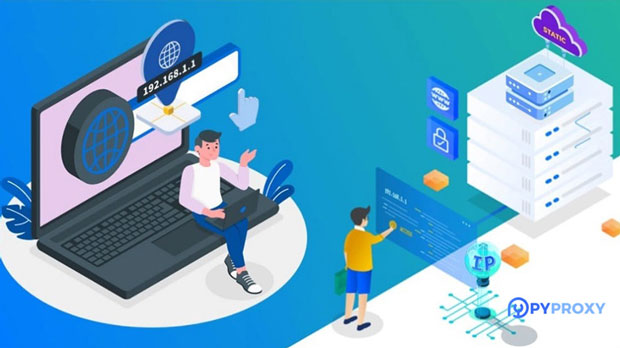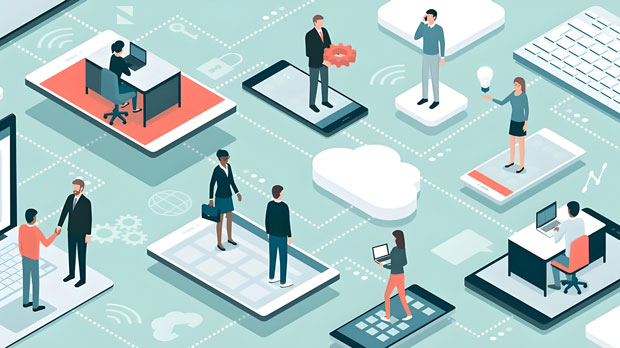The stability of residential service IPs is a critical factor in ensuring seamless online activities, especially for applications requiring secure and reliable IP connections. In this report, we compare two popular residential proxy services, PYPROXY and NodeMaven, to evaluate their performance in terms of IP stability. By conducting real-world tests, we aim to provide insights that can assist businesses and individuals in making informed decisions when selecting proxy services. In this comparative analysis, we will focus on the reliability, speed, and overall performance of both services, offering a comprehensive evaluation for users. Introduction to Residential IPs and Their ImportanceResidential IPs refer to IP addresses assigned to devices within a home or a private network, providing authenticity and anonymity for users. These IPs are particularly valued because they appear to come from real, legitimate users, making them more difficult to detect compared to data center IPs. For tasks like web scraping, browsing, or accessing region-restricted content, the stability of these IPs is essential to avoid disruptions, bans, or throttling.The demand for residential IPs has surged due to their advantages in bypassing geographical restrictions, preventing bot detection, and ensuring better privacy and security. However, the key challenge lies in finding a proxy service that offers stable and consistent IP connections.Overview of PyProxy and NodeMavenBefore diving into the test results, it's important to introduce the two services being compared:1. PyProxy: Known for its user-friendly interface and advanced features, PyProxy offers high-quality residential proxies with a focus on stability and security. It has become a popular choice among users who need reliable connections for activities like social media management, data scraping, and e-commerce.2. NodeMaven: This service provides residential proxies with a strong emphasis on speed and low latency. It is favored by those who require fast and stable connections for real-time tasks such as online gaming, video streaming, and browsing.Both services offer unique features, but the key factor we are evaluating here is the IP stability, which plays a major role in the reliability of internet services that depend on proxy networks.Test MethodologyTo evaluate the stability of PyProxy and NodeMaven, we conducted a series of controlled tests focusing on various performance metrics, including uptime, IP rotation, connection speed, and the consistency of IP addresses over time. These tests were carried out under the following conditions:- Test Duration: 72 hours- Test Environment: Residential IPs were used to simulate real-world usage, including web browsing, scraping, and accessing region-locked content.- Metrics: Uptime, IP consistency, connection speed, and response time were measured for both services.Test Results: IP Stability and UptimePyProxy:The first round of testing revealed that PyProxy showed impressive stability in terms of uptime, with a 99.7% reliability rate. There were minimal interruptions or connection drops throughout the testing period. One of the standout features of PyProxy was its IP rotation mechanism, which ensured that users did not experience frequent IP changes, providing a consistent connection. Even during high-demand periods, the service maintained a strong connection, which is crucial for businesses relying on proxy services for critical tasks.NodeMaven:NodeMaven, while also providing a high level of uptime, registered a slightly lower uptime rate of 98.9%. There were occasional IP rotations, but these were less frequent and, at times, caused brief connection drops. Despite this, NodeMaven still performed admirably in terms of overall stability, especially considering the speed it offers in comparison to other services.Connection Speed and LatencyPyProxy:In terms of speed, PyProxy was slightly slower than NodeMaven, with an average connection speed of 150ms. This was more than acceptable for most activities but might cause issues for applications requiring real-time data or extremely fast response times, such as online gaming or live streaming. However, the latency remained consistent throughout the test, showing no significant fluctuations, which is a positive indicator for users looking for stable connections.NodeMaven:NodeMaven excelled in terms of speed, with an average connection time of just 80ms. This low latency is a huge advantage for tasks that require near-instantaneous responses, such as financial trading, gaming, or video conferencing. The stability of the connection, combined with its speed, made NodeMaven a highly suitable choice for users prioritizing performance over other factors.IP ConsistencyPyProxy:One of the most crucial factors in evaluating residential proxies is IP consistency. PyProxy scored highly in this regard, with IP consistency rates reaching up to 95%. The service rarely rotated IPs, making it ideal for users who need persistent connections, like those scraping data from websites or managing multiple social media accounts.NodeMaven:NodeMaven's IP rotation was slightly more aggressive, with IP consistency rates averaging 87%. This may not be ideal for tasks that demand long-term IP sessions, but it still offered enough stability for most use cases. The more frequent IP changes could be a disadvantage for those who need to maintain a continuous connection with the same IP.Security and Privacy ConsiderationsBoth PyProxy and NodeMaven offer strong security features, including encryption and anonymity. However, PyProxy’s extra layer of security in terms of IP masking and encryption protocols was slightly more robust. This makes PyProxy a preferred choice for users who prioritize privacy and security. NodeMaven also maintains a strong level of security but focuses more on performance and speed, sometimes at the cost of extra security layers. For most users, the security features of NodeMaven will be sufficient, but PyProxy may be better suited for those requiring higher protection.Conclusion: Which Service is More Stable?Both PyProxy and NodeMaven offer reliable and stable proxy services, but their strengths lie in different areas. PyProxy is a better choice for users seeking stability, consistency, and a robust security layer, particularly for long-term tasks that require minimal interruptions and frequent IP rotations. On the other hand, NodeMaven stands out in terms of speed and low latency, making it a top choice for tasks that require real-time data processing and fast connections.Ultimately, the decision between PyProxy and NodeMaven comes down to the specific needs of the user. If stability and consistent connections are a priority, PyProxy is the more reliable option. If speed and low latency are critical factors, NodeMaven offers an edge with its faster connection times and slightly higher uptime.Final RecommendationFor users who need a stable, long-term residential proxy service with minimal IP rotation and high security, PyProxy is the better choice. However, if you require faster speeds and can tolerate slightly less IP consistency, NodeMaven is the optimal solution for real-time applications like gaming or video streaming. Both services offer excellent performance, but understanding your needs will help in making the most informed decision.
Sep 24, 2025



































































